Scott W. Wagner
Gun Digest BOOK OF
SURVIVAL GUNS
Tools & Tactics for Disaster Preparedness
No work such as this would be possible without the support of family and friends. I wish to thank my wife, Bobbie, for patiently putting up with me and two gun safes in the house, including one in the bedroom. I also wish to thank my sister-in-law, Mandy Hughes, for her photographic work and contributions. Several of my police academy cadets participated as models in the photos, and I appreciate their efforts, as well. Many thanks to the Special Forces operators, who provided their insight, as well as my law enforcement friends, who have suddenly realized the seriousness of this topic. Finally, thanks to my friend and survival expert Bill, who helped confirm my concepts were on the right track. I also wish to thank the following manufacturers and companies for providing test and evaluation materials for use in this book:
Bates and Dittus
BLACKHAWK!
Century International Arms
Crimson Trace
Del-Ton Firearms
DPMS
IO Firearms, Inc.
Food Insurance
Ithaca Firearms
Lasermax
Marlin Firearms
Maxpedition
Maglite
Mossberg Firearms
For those of you who have chosen to be ready, and who may have suffered some ridicule for your beliefs, I would offer this. There was once a man named Noah. He prepared an ark to save his family and the animals specified by God from an impending flood that God said would wipe out all animal life from the earth. It took Noah and his family many years to complete this work. Although the Bible does not record it, there is no doubt that he was the object of ridicule and scorn by those who were soon to be wiped out. Keep preparing. While we hope the things we are preparing for never come, we want to be ready in case we do. We owe that to ourselves, our families, and our trusted friends.


According to the National Geographic television show Doomsday Preppers, approximately 45 percent of the population has been preparing at various levels to cope with some form of upcoming societal upheaval, either at a local or national level. The forms of calamity that motivate individual preppers, as they are called, are myriad, ranging from comet strikes and volcanic eruptions in Yellowstone National Park to localized disasters such as tornados and hurricanes, and on up to things on a national or even global scale, such as would happen in a complete economic collapse. No matter the reason for the crisis, the concepts for survival are the same: provide for long-term food, water, medical supplies, and the general security needs for yourselves, friends, and family members, when the traditional needs of substance provision are either temporarily or permanently unavailable. While there are a number of survival guides both from FEMA and private sources available to the public that promise to cover this topic, there is very often one aspect overlooked, and that is the selection of weapons and tools that provides the best security for prepared families at a reasonable cost.
Gun Digests Guide to Survival Guns covers not only the selection of firearms, but other concepts such as layered defenses, caliber selection, action types, ammo types, carry methods, and commonality with other weapons systems. An examination of support gear, including carry and storage systems, along with transport modes and deployment (Chapter 12, Emergency Evacuation: Needs Beyond the Gun), is presented and contrasted to weapons systems and defense methods already in place for those potentialities. Pre-disaster travel will also be explored, as well as a discussion of triggering events. Recommended firearms training plans are also scrutinized.
The Gun Digest Book of Survival Guns should appeal to a wide variety of people interested in long-term survival, whether the endangering event is on a local, state, or national level. Cops, civilians, and soldierseveryone who is interested in keeping themselves and their families intact when these perilous events occurwill find useful information in this text, regardless their stage of preparation or belief system. An intense focus on practical firearms to obtain prior to these events sets the Gun Digest Guide to Survival Guns apart from other works written towards this topic. I hope you will find this information and the concepts presented therein helpful.Scott W. Wagner
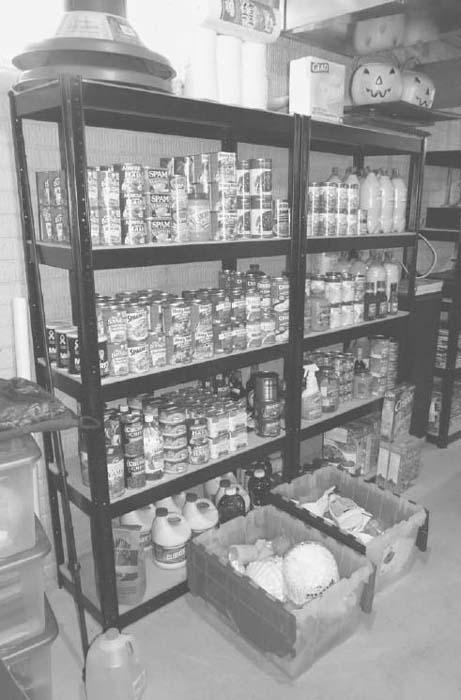
A well-stocked survival food supply. This is essential where youre planning on bunkering down for the long term, a concept known as sheltering in place.
CHAPTER ONE
Whats the Big Emergency? Whats Everyone Worried About?
It is clear there is a deep-running fear throughout a large portion of the United States population, one at a level unseen since the Cuban Missile Crisis days of the Cold War in the early 1960s, when I grew up. Although I dont remember actual duck and cover drills, which I think were phased out as being rather useless at the end of the 1950s, I do remember the crisis and people building personal bomb shelters. I remember that, while my dad didnt build us a bomb shelter, we did have extra food stored in the basement for an emergency (though Im not sure it would have been enough for our family of four). I also remember the myriad buildings designated as official Civil Defence fallout shelters that were stocked with food for the supposed long-term survival of as many people as was possible to fit inside.

This Civil Defence emblem could be seen posted on many buildings in the 1950s and 60s, identifying these places as bomb shelters.
Fortunately the bombs never fell, and the specter of nuclear war grew faint over time. But, while the concept of some form of preparedness waned, it never disappeared. When it came back, in 1992, it was due to the election of Bill Clinton as President, and this time the preparation carried with it a major focus on obtaining and stockpiling firearms and ammunition, particularly because of the 1994 Assault Weapons Ban; the concept of food storage and the reinforcement of the home didnt seem to be as much a part of that. The people who loaded up on guns were only in part thinking of armed resistance against the government, and an even smaller portion of that populace gave thought to what such a resistance might entail. Most of the other people were thinking about buying and hiding the guns they acquiredthats when the backyard burial and storage vaults first appeared.
What was also a part of the 90s preparedness movement was the appearance of unofficial militias for defense against government intrusion, a response against the perceived threat of big government. So not only did folks individually prepare, some also joined groups (or at least until they were turned off by some of the radical thoughts harbored by some of them). And while the election of Barack Obama as President fueled an even bigger rush to buy guns and ammoObama is often referred to as the largest gun salesman in the history of the U.S., with Bill Clinton running a close secondthere are new underpinnings to twenty-first century preparations. While there is still concern over government interference, it seems to me that the major concern is now our fellow citizens, those who will be motivated to rob, kill, and steal in order to survive due to a major societal and economic collapse of the type that is already starting to affect European nations staggering under a huge burden of unsecured debt. Or, worse yet, debt secured by Communist (yes, I said Communist) China. (You know, the same folks that send us poisoned dog food, lead-painted kids toys, and who slide counterfeit, defective, electronic parts for aircraft and our weapons systems through the military procurement channels.)

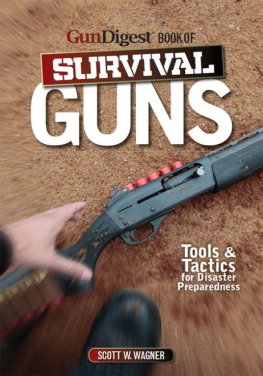
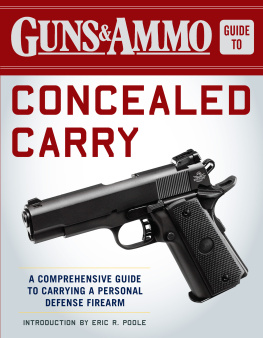
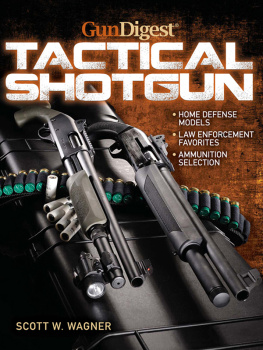


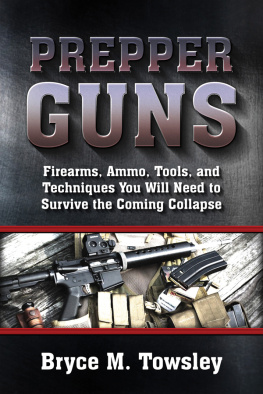
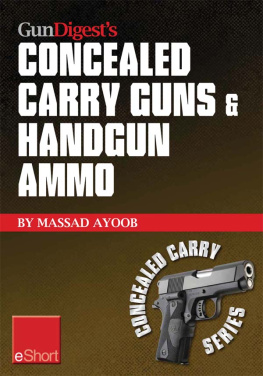
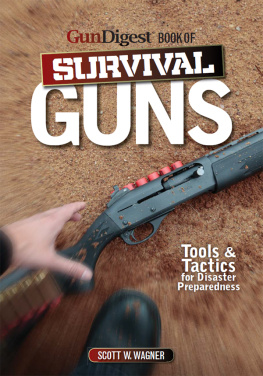
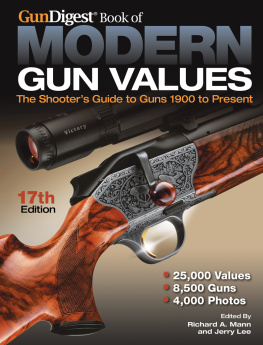

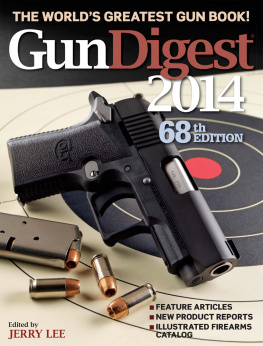
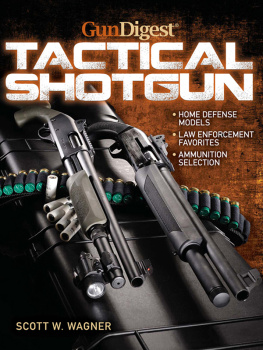
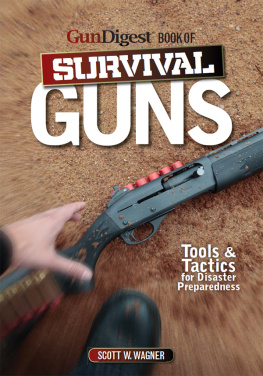


 A well-stocked survival food supply. This is essential where youre planning on bunkering down for the long term, a concept known as sheltering in place.
A well-stocked survival food supply. This is essential where youre planning on bunkering down for the long term, a concept known as sheltering in place.  This Civil Defence emblem could be seen posted on many buildings in the 1950s and 60s, identifying these places as bomb shelters.
This Civil Defence emblem could be seen posted on many buildings in the 1950s and 60s, identifying these places as bomb shelters.